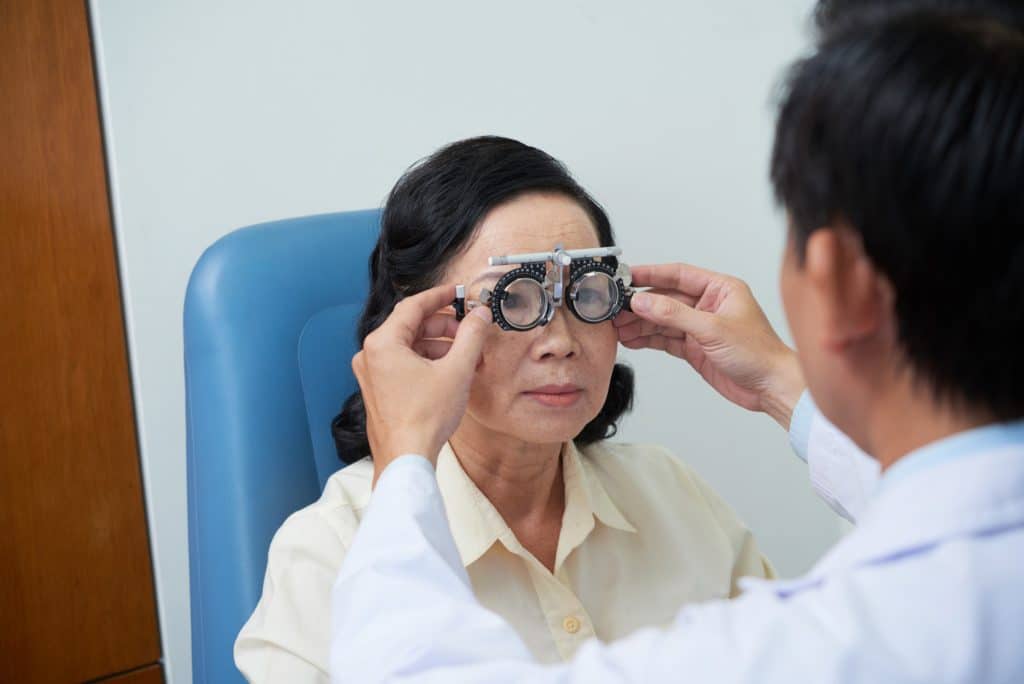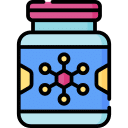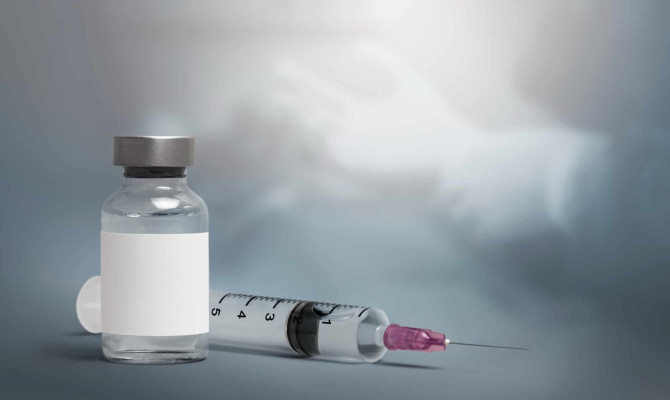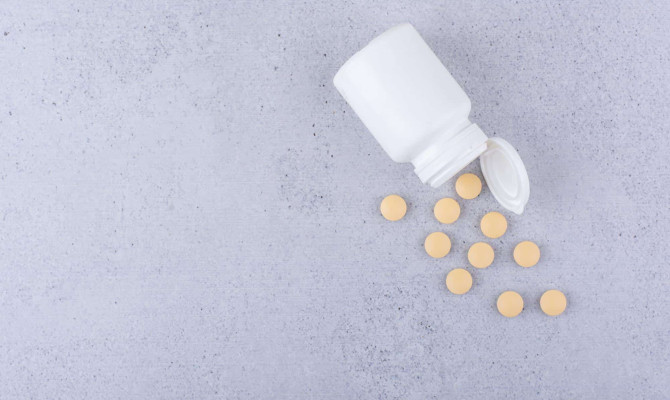Eylea: Uses, Side effects and Interactions

- Eylea
- 22 Aug 2023
Overview
What is Eylea?
Eylea is the trade name of the prescription drug to retard or prevent vision loss in specific eye diseases affecting the macula or retina, viz; age-related macular degeneration and diabetic eye ailment.
Macula is the small oval-shaped area in the center of the eye’s retina for a clear vision of front objects. The retina is the light-sensitive area on the interior side at the back of the eye.
Eylea is also used to treat retina-affecting eye diseases in premature babies. It comes in a liquid solution that doctors give as an injection into the eye.

Facts of Eylea
- In 2011, FDA (The Food and Drug Administration, United States) approved Eylea for wet macular degeneration.
- Eylea is a biologic drug not available in its biosimilar form. Biologic drugs are made from living cells. Biosimilar drugs contain the same active ingredient as the parent drug 1Overview| Researched based study from Sciencedirect.com
Category of drug
- Eylea contains aflibercept as the active ingredient and relates to the collection of drugs known as vascular endothelial growth factor blockers. 2Overview| Researched based study from Nlm.nih.gov ,3Overview| Researched based study from Nlm.nih.gov .
Uses
Uses of Eylea
The FDA has approved Eylea to treat the following health conditions:
- Wet age-related macular degeneration
- Diabetic macular edema
- Diabetic retinopathy
- Macular edema from retinal vein blockage (retinal vein occlusion)
Wet age-related macular degeneration
- Wet age-related macular degeneration is a disease affecting older adults’ central vision. It occurs due to the unusual growth of blood vessels under the macula that leaks blood and fluid, causing inflammation and macula scarring.
- The individual finds difficulty reading and seeing faces, and the condition worsens with time.
Diabetic macular edema
- Diabetic macular edema is a diabetes (high sugar) complication. Diabetic macular edema is an eye disease due to excess fluid accumulation in the spaces in the macular area of the retina.
- It affects the central vision making things look darker and blurred.
Diabetic retinopathy
- Diabetic retinopathy is a diabetes complication causing vision loss and blindness.
- It is caused due to persistent high sugar that damages the retina’s blood vessels, making them bulge and leak.
- It destroys the individual’s central and side vision. The symptoms associated with Diabetic retinopathy are-blurry vision, reduced color differentiation, decreased night vision, dark spots in vision,
Macular edema from retinal vein blockage (retinal vein occlusion)
- Macular edema is the bulging of the macula. It can happen due to obstruction of the retinal vein that carries blood from the eye to the heart. Obstruction leads to pressure buildup in the eye’s macular area, causing swelling, blood, and fluid leakage.
- Individual with macular edema generally has low blurred vision and might also develop sudden or progressive vision loss in a few hours 5Uses| Researched based study from Nlm.nih.gov
Dosage
Dosage of Eylea
The doctor (ophthalmologist) will advise the correct dose based on the patient’s age, medical condition, and severity.
Some of the commonly recommended doses of Eylea are as follows:
Dosage for Wet related macular degeneration
- Initial dose-One Eylea injection every 28 days for three months
- Maintenance dose-One injection every eight weeks or four weeks (in some cases)
- After 12 months of treatment, the doctor might change the dosing schedule of the infusion.
Dosage for Diabetic macular edema
- Initial dose- One injection every four weeks for five months
- Maintenance dose-One injection every four weeks or eight weeks
Dosage for macular edema
- One injection every four weeks 4Dosage| Researched based study from Nlm.nih.gov
Formulations
Formulations of Eylea
Eylea is available in the following forms:
Single-use vials
- It is a single-dose vial to prevent contamination and infection spread.
Single-use prefilled syringe
- It is a single-dose, one-use pre-packed syringe to prevent drug contamination.
Available Strength
- Both the forms come in one strength (power) of 2mg (milligram)/0.05 mL (milliliter)
Administration of Eylea
Doctors give Eylea injection in the eyes, known as an intravitreal injection.
Procedure
- The eye doctor (ophthalmologist) will initially wash the eyes to reduce the infection risk.
- Then he will give local anesthetic eye drops (ophthalmic anesthetics) to make the eye area insensitive and to minimize pain.
- The doctor will inject Eylea through a thin needle into the eye’s sclera (white portion). The drug will gradually enter into the gel-like substance (vitreous) inside the eyeball 7Formulations| Researched based study from Nlm.nih.gov
Missed dose of Eylea
- One must take the Eylea injection doses as advised. Call the doctor for an appointment to reschedule the drug dose in case of missing out. However, one must always remember that discontinuing Eylea’s treatment will only deteriorate their eye condition.
Side effects
Side effects of Eylea
Mild side effects
- Blurry vision
- Eye pain
- Eye bleeding
- Cataract (cloudy eye lens)
- Dark shapes floating in vision (Floaters)
- Retinal detachment from the vitreous humor (the gel-like substance in the eye)
Serious side effects
- Increased eye pressure
- Retina detaching from the back of the eye
- Retinal tears (pull apart)
- Fluid infection inside the eye (endophthalmitis)
- Stroke (rupture of the brain’s blood vessels )
- Hives
- Itching
- Skin rash
- Swelling in the lips, mouth, tongue, and throat
- Difficult breathing 6Side effects| Researched based study from Nlm.nih.gov
Overdose
Overdose toxicity of Eylea
- One must only take Eylea’s recommended doses.
- However, in case of overdose and severe symptoms such as difficulty breathing, one must dial the emergency contact number based on the geographical location or rush to the nearest emergency medical room.
Contraindications
Contraindications
Eylea might not be suitable for persons with the following health conditions:
- Allergic to Eylea or any of the ingredients of the drug
- Swollen and red eyes
- Increased eye pressure (glaucoma)
- Infection in and around the eyes
- Heart problem 9Contraindications| Researched based study from Nlm.nih.gov
- Lactating mothers and pregnant women must avoid using Eylea due to the lack of information on the safety and efficiency of these groups 8Contraindications| Researched based study from Nlm.nih.gov
One should not use Eylea if there is:
- Swelling and pain in the eyes
- Any Infection viz; viral; bacterial in and around the eyes
- Allergic to the aflibercept component of the drug
Interactions
Interactions of Eylea
- To date, there needs to be more information to specify drugs that interact with Eylea.
- However, there is every possibility that drug interactions might occur. So it is crucial to consult the doctor about any medical treatment, including eye treatment that is going on. One example of eye treatment is glaucoma.
- Eylea can increase eye pressure. So taking both drugs together might reduce the effectiveness of glaucoma eye drops 10Interactions| Researched based study from Nlm.nih.gov
Cost
Cost of Eylea
- The cost of Eylea might vary depending on several aspects, such as the pharmacy in use, the geographical site, and the insurance coverage.
- One can avail of financial assistance for Eylea from the Eylea manufacturer’s program known as EYLEA4U. For more information regarding the eligibility for financial aid, visit the program’s website.
- The current prices for the Eylea injection without insurance coverage in a particular location are available on the website calledWellRx.com
Alternatives
Alternatives of Eylea
Other drugs are also available to treat similar conditions of Eylea. Some may suit better than others. One opting for an alternative medicine must discuss it with the eye doctor to get the best suit.
Alternatives for diabetic retinopathy
Some examples of alternative drugs are listed below:
- Lucentis
- Avastin
- Beovu
Alternatives for macular degeneration
Some examples of alternative medications are listed below:
- Avastin
- Lucentis
- Macugen
Alternatives for diabetic macular edema
Some examples of alternative drugs are listed below:
- Lucentis
- Ozurdex
- Iluvein
Alternatives for macular edema subsequent retinal vein occlusion
Some examples of alternative medications are listed below:
- Lucentis
- Beovu
- Avastin 11Alternatives| Researched based study from Sciencedirect.com
Takeaway
Key Takeaways
- Eylea is an FDA-approved prescription eye injection for managing specific eye diseases such as macular degeneration and diabetic retinopathy.
- One can get Eylea injection at a doctor’s office or clinic
- People with medical conditions must inform the doctor before taking Eylea to avoid unwanted complications
Any feedback on this article?
 This Articles content was accurate
This Articles content was accurate Very Informative Article
Very Informative Article I have a question or a comment
I have a question or a comment
 This article contains inaccurate content
This article contains inaccurate content This article was not helpful
This article was not helpful I have a question or a comment
I have a question or a comment
We appreciate your helpful feedback!
Checkout our social pages
References
-
Science Direct
Aflibercept - an overview | Overview
-
National Library of Medicine
Aflibercept | Overview
-
National Library of Medicine
Aflibercept in wet AMD: specific role and optimal use | Overview
-
National Library of Medicine
Aflibercept (Eylea): Treatment of Neovascular (Wet) Age-Related Macular Degeneration | Dosage
-
National Library of Medicine
Intravitreal aflibercept (Eylea(®)): a review of its use in patients with macular oedema secondary to central retinal vein occlusion | Uses
-
National Library of Medicine
Aflibercept (Eylea): Treatment of Neovascular (Wet) Age-Related Macular Degeneration | Side effects
-
National Library of Medicine
Prefilled Eylea Syringe: our recent experience | Formulations
-
National Library of Medicine
Aflibercept | Contraindications
-
National Library of Medicine
Key Characteristics of Aflibercept and Ranibizumab - Aflibercept (Eylea) | Contraindications
-
National Library of Medicine
Incidence of ocular hypertension after intravitreal injection of anti-VEGF agents in the treatment of neovascular | Interactions
-
Science Direct
Intravitreal Injection of Bevacizumab (Avastin) as Adjunctive Treatment of Proliferative Diabetic Retinopathy | Alternatives





































